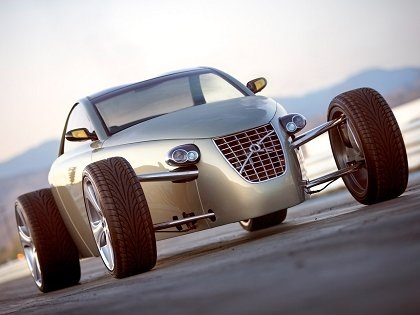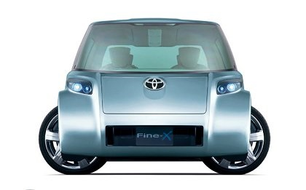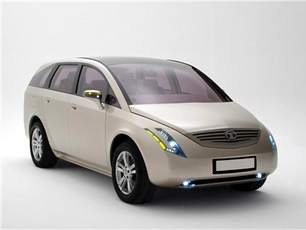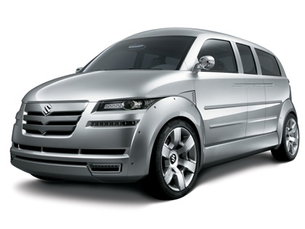2005 Hyundai Portico Concept
- Story Cars
.png/v1/fill/w_320,h_320/file.jpg)
- May 13, 2025
- 2 min read
Unveiled in 2005, the Hyundai Portico Concept represented the brand’s bold exploration of a crossover vehicle that merged minivan utility, SUV presence, and sedan comfort—an early blueprint for what we now recognize as the modern family crossover. Developed by Hyundai’s Advanced Design Team in South Korea, the Portico was shown as a possible answer to growing demand for flexible, stylish, and environmentally forward family transportation.
At first glance, the Portico stood out for its pillarless door design, creating a wide-open entry experience. The rear doors opened in a rear-hinged (suicide door) fashion, complementing the front-hinged front doors to resemble a gate-like setup. This approach eliminated the traditional B-pillar, offering unprecedented access to the cabin—particularly helpful for families or passengers with limited mobility. The vehicle's overall shape was clean and futuristic, with a high roofline, sleek aerodynamics, and a wide stance. It didn't look like a typical minivan or SUV—it was a hybrid in form and function, blending the practicality of a people-mover with stylish CUV-like proportions.
Inside, the three-row layout was configured for six passengers, with two individual seats per row. Each seat was electrically adjustable, emphasizing comfort and accessibility. The cabin was spacious, designed to accommodate passengers of all builds, with a focus on ergonomics and ease of movement. The rear passengers were treated to a built-in entertainment DVD system, while the front occupants had access to a navigation interface and a central information console, mounted at the top of the dashboard, displaying vital vehicle and travel data.
The Portico was designed with Hyundai’s hybrid ambitions in mind. It was powered by a Lambda DOHC V6 engine paired with a 6-speed Shiftronic automatic transmission. Complementing the gasoline engine were two electric motors, contributing to a combined output of 220 hp. The Portico featured an all-wheel drive drivetrain, a rarity among minivan-styled concepts at the time, offering better traction and a hint of SUV functionality. This hybrid setup was a clear precursor to Hyundai’s future investment in eco-mobility, foreshadowing systems that would later evolve in models like the Sonata Hybrid and Ioniq series.
Though the Portico never made it to production, its influence was felt in the design language and functionality of later Hyundai family crossovers like the Santa Fe and Palisade. It also helped pave the way for future hybrid and fuel cell development, including Hyundai’s early commitment to alternative fuel powertrains. By combining futuristic styling, smart utility, and hybrid innovation, the Portico was more than just a showpiece—it was a declaration of intent from Hyundai, signaling its plans to transition from a budget-friendly brand to a technologically advanced and design-forward automaker.







































Comments